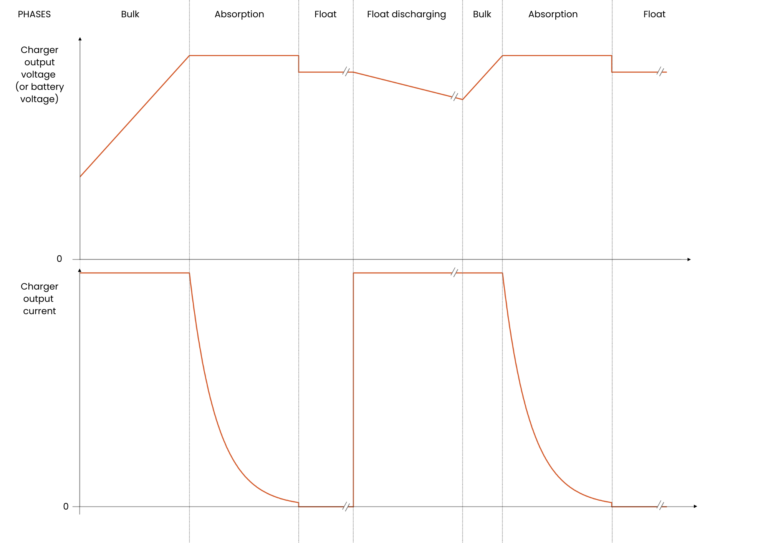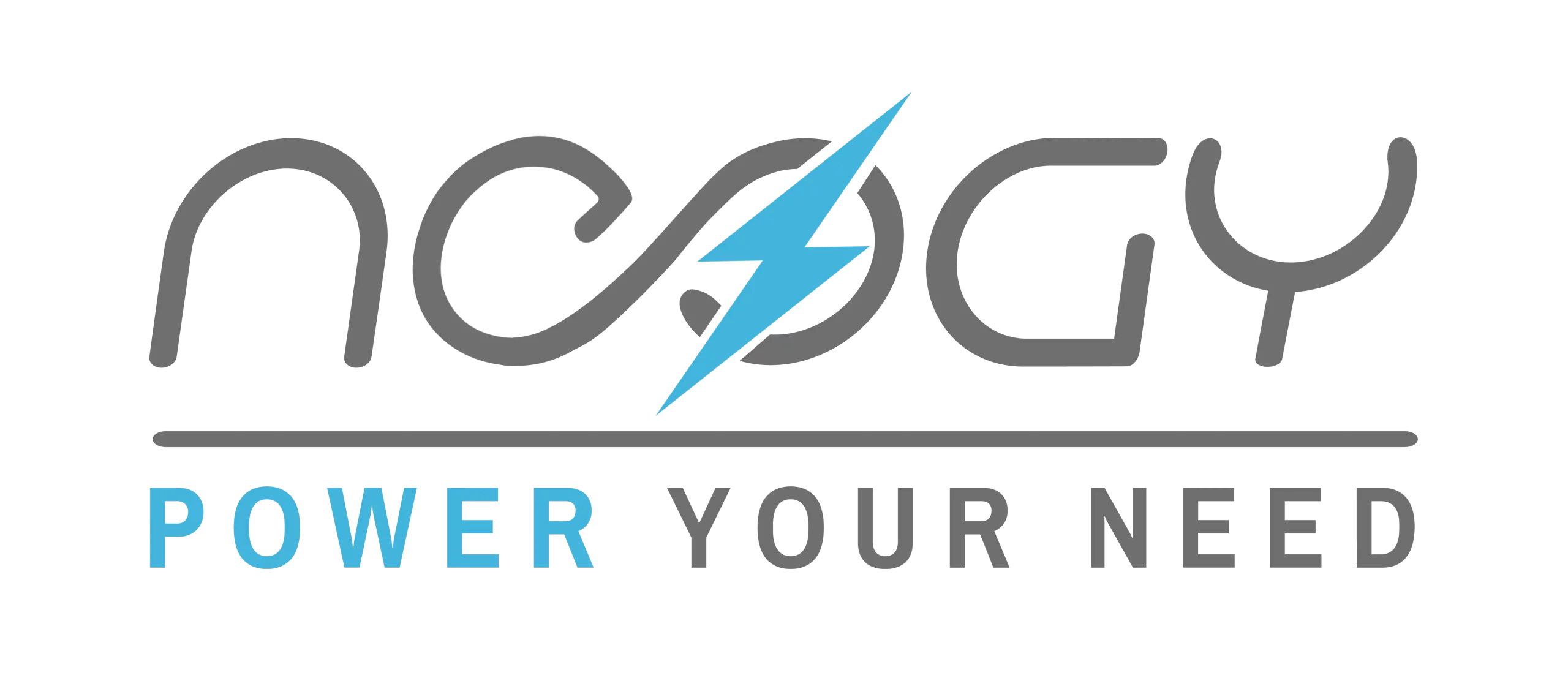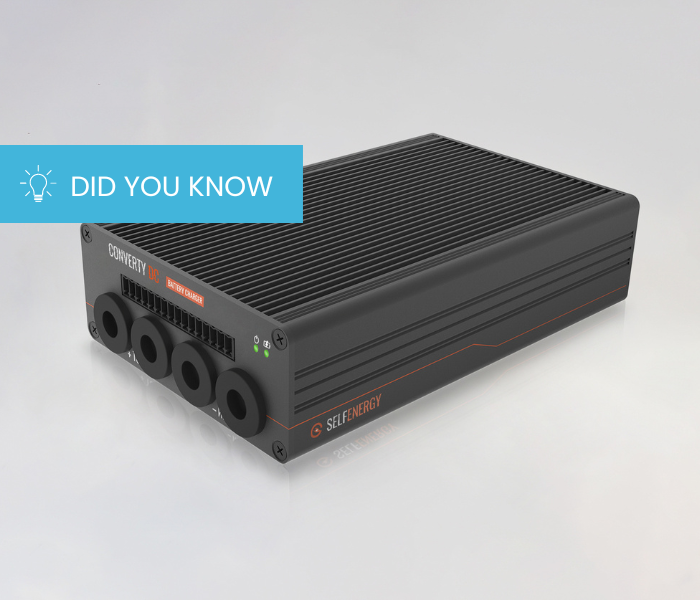Battery chargers play a crucial role in energy conversion. The type of charger and its characteristics are all the more important as the battery sector has seen many developments in recent years.
How a battery charger works
The main function of a battery charger is to convert a voltage from an electric network (AC/DC charger), a solar panel (MPPT charger) or another DC voltage source (DC/DC charger) to a DC voltage suitable for a battery, while controlling the charging current.
To do so, it uses different charging phases to transfer energy into the battery:
- Bulk phase: The battery is charged at constant current (maximum charge current) until the end-of-charge voltage is reached;
- Absorption phase: The battery is charged at a constant voltage with a gradually decreasing current to reach the full charge. A low minimum current can allow lithium batteries to be properly balanced;
- Floating phase: To ensure good battery life, the full charge voltage should not be maintained. The floating phase maintains a high enough voltage to keep the battery charged without degrading it.

With the new generation of components, chargers are becoming more and more efficient and can be adapted to all battery electrochemistries, thanks to two elements:
- Connectivity: Connectivity refers to the ability of the charger to interface with the battery through a communication protocol such as the CAN Bus for example. Thanks to this protocol, the electronic board inside the charger will be able to communicate with all the elements of the system, in particular the Battery Management System (BMS) of the battery;
- The BMS: The BMS is a crucial element of lithium-ion batteries in particular. The BMS manages and monitors in real time all the elements that make up the battery. Today, the charger can retrieve important information about the battery thanks to the communication protocol integrated in the BMS. This information (state of charge SOC, state of health SOH, etc.) will enable the charger to adapt to the battery’s charging process in order to optimise its performance and ageing.
Adapted battery charger: requirements to be fulfilled
In recent years, low-powered batteries with limited autonomy have gradually given way to more powerful batteries such as lithium-ion batteries (e.g. LTO/LFP/NMC).
Whether for stationary applications or for electric mobility, all professionals, including manufacturers, have an interest in equipping themselves with chargers adapted to their battery technology in order to offer an optimal customer experience.
To do this, they must ensure that their charger guarantees :
- Optimisation of battery charging using customised charging profiles: The charging curve defines the charger’s operating profile with predefined thresholds and times. A customised charger can optimise the classic charging profiles (bulk, absorption, floating) to ensure optimal battery charging;
- Optimisation of its safety: An adapted charger automatically retrieves information necessary for the proper functioning of the battery charging process, such as the maximum charge voltage or the maximum charge current. By knowing this data, the charger optimises the safety of the battery during charging by avoiding any risk of overcharging or short-circuiting;
- Optimisation of the battery’s lifespan: A suitable charger can control the charge of the battery according to the temperature and the ageing of the cells.
Neogy®, in close collaboration with Selfenergy, is aware of the important choice that professionals have to make and is able to offer suitable chargers for all its batteries.
As an expert in energy conversion, Selfenergy designs AC/DC, DC/DC and MPPT chargers that are compatible with different electrochemical technologies (lithium-ion, Ni-MH, lead, etc.) and that respect watertightness constraints.
Selfenergy chargers use customised charging profiles developed and tested by our battery experts to provide you with a complete and reliable charge according to your battery type.

